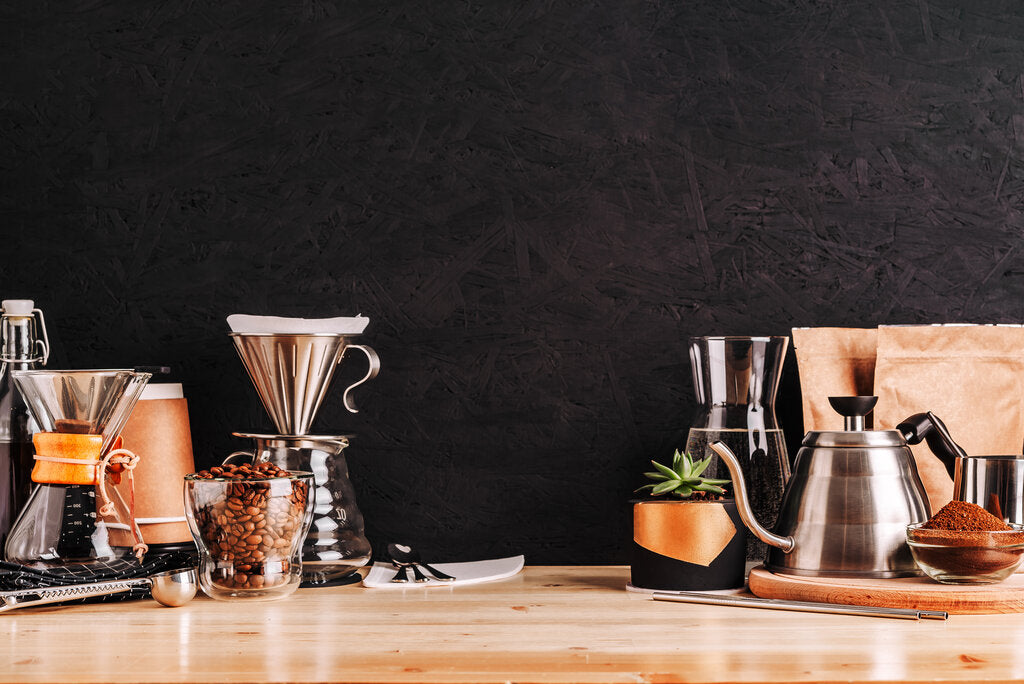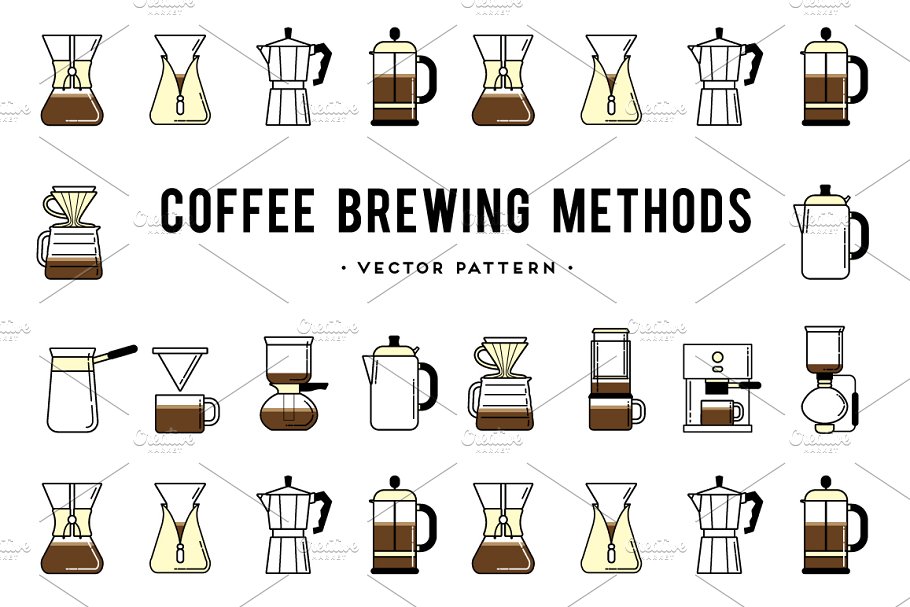A Comprehensive Guide to Numerous Coffee Brewing Methods You Must Try
A Comprehensive Guide to Numerous Coffee Brewing Methods You Must Try
Blog Article
The Science Behind Coffee Brewing: Exactly How Temperature Level and Time Affect Your Drink
Recognizing the scientific research behind coffee developing exposes that temperature level and time are not plain variables however essential components that determine the drink's taste account and total high quality. As we explore the subtleties of these components, the inquiry occurs: exactly how can one efficiently equilibrium temperature level and time to achieve that best mixture?
The Chemistry of Coffee Removal
The chemistry of coffee extraction dives right into the complex processes that transform raw coffee beans right into the aromatic beverage enjoyed worldwide. This makeover primarily includes the solubility of different compounds present in the beans, which are affected by factors such as grind size, water top quality, and the brewing method used.
Throughout the brewing procedure, hot water functions as a solvent, extracting soluble substances, including caffeine, sugars, acids, and lipids, from the coffee premises. Each compound adds to the taste profile, scent, and body of the last beverage. Acids are responsible for intense and tasty notes, while oils add to an abundant mouthfeel.
The first stages of developing extract acids and sugars, leading to an enjoyable acidity, while long term extraction can lead to bitterness due to over-extraction of undesirable substances. Comprehending these chemical communications is crucial for maximizing developing strategies, as the balance between removal time and water temperature can considerably influence the overall high quality of the coffee.
Perfect Developing Temperatures
Locating the right brewing temperature is vital for opening the complete possibility of coffee tastes and aromas - coffee brewing methods. Study suggests that the optimum variety for developing coffee exists in between 195 ° F to 205 ° F(90 ° C to 96 ° C) Within this array, the extraction procedure successfully dissolves the preferable soluble compounds in coffee beans, bring about a flavorful and balanced mug
Brewing at lower temperatures, such as listed below 195 ° F(90 ° C ), might cause under-extraction, producing an acidic and weak mixture with soft flavors. Conversely, brewing at temperature levels surpassing 205 ° F(96 ° C) can bring about over-extraction, producing a rough and bitter taste as a result of the too much dissolution of unwanted compounds, such as tannins.
Furthermore, the perfect developing temperature can vary relying on the coffee bean type and roast degree. For instance, lighter roasts usually take advantage of slightly greater temperatures to improve their intricate taste profiles, while darker roasts might be much better matched to reduced temperature levels to minimize anger.
Ultimately, preserving accuracy in developing temperatures is essential for accomplishing an unified equilibrium of tastes, making certain that every cup of coffee supplies a satisfying sensory experience.
Impact of Developing Time
Developing time plays an essential role in figuring out the flavor profile and total high quality of coffee. Much shorter developing times can result in under-extraction, leading to a weak or sour taste, as not enough soluble compounds are dissolved.
Optimal brewing time varies depending on the technique used and the work size of the coffee. For instance, a French press generally needs about four minutes, while espresso removal is generally completed within 25 to 30 seconds. It is important to calibrate developing time in conjunction with various other variables, such as water temperature level and coffee-to-water proportion, to achieve the desired taste account.
Comprehending the effect of brewing time makes it possible for coffee fanatics to fine-tune their brewing methods, ultimately improving the sensory experience of their mug (coffee brewing methods). With careful attention to this variable, one can unlock the check full possibility of the coffee, disclosing its distinct features and nuances
Brewing Approaches and Their Effects

For circumstances, techniques like French press and cold mixture enable a longer steeping time, resulting in a fuller body and durable taste as a result of raised removal of oils and soluble solids. Conversely, coffee developing makes use of high stress and a shorter extraction time, producing a concentrated shot that highlights extreme tastes and an abundant crema.
Pour-over techniques, such as Chemex or V60, supply an even more controlled removal procedure, permitting the brewer to manipulate flow price and water circulation, which can improve brightness and clearness. Meanwhile, percolation techniques cycle water with the coffee grounds numerous times, bring about a more powerful, usually bitter flavor.
Finally, using paper filters versus steel filters can likewise affect the final preference; paper filters generally yield a cleaner mug by trapping oils and great bits, while metal filters allow even more oils to travel through, adding to a fuller mouthfeel - coffee brewing methods. Comprehending these subtleties can elevate the coffee experience substantially
Tips for Perfecting Your Mixture
A well-executed mixture can change also the simplest coffee into an impressive experience. Grind the beans just prior to making to maximize quality, index making certain the grind size matches your developing technique-- coarser for French press and finer for espresso.
Water top quality plays an essential role; use filteringed system water without pollutants. The excellent developing temperature varies in between 195 ° F and 205 ° F(90 ° C to 96 ° C ) Too warm can burn the coffee, while too great might under-extract flavors.
Timing is just as essential. For immersion techniques, steeping for 3 to five minutes is optimal, whereas drip techniques normally take about 5 mins. Trying out brew times to locate your favored strength.

Conclusion
In summary, the detailed connection between temperature and time is vital in the coffee brewing process. Comprehending these clinical concepts empowers people to improve their developing techniques, ultimately leading to a much more pleasurable and balanced coffee experience.
Understanding the scientific research behind coffee developing discloses that temperature level and time are not plain variables however crucial useful content components that determine the beverage's taste profile and total high quality. Comprehending these chemical communications is essential for enhancing developing strategies, as the balance between extraction time and water temperature level can substantially affect the total quality of the coffee.Brewing time plays a pivotal duty in establishing the flavor account and overall top quality of coffee. By focusing on these elements-- bean high quality, grind dimension, water temperature, steeping time, and ratio-- you can raise your coffee brewing procedure, resulting in a consistently superior mug.
In summary, the detailed connection between temperature and time is vital in the coffee brewing procedure.
Report this page